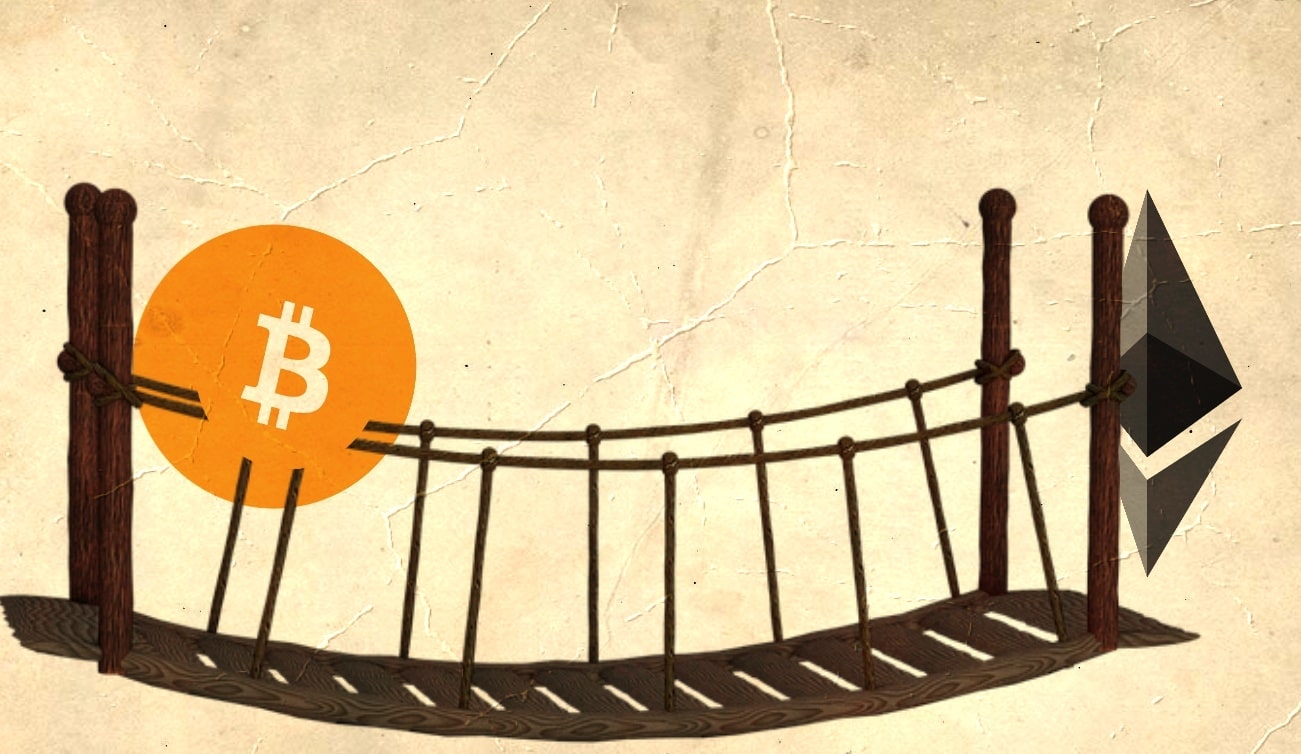What Is a Blockchain Bridge? How Does It Work? It’s Benefits
Nowadays, it’s common to see stores displaying signs like ‘Bitcoin Accepted’ or ‘Crypto Accepted’ accompanied by a QR code.
However, the issue arises when most stores only accept payment in one major cryptocurrency, usually Bitcoin. As crypto enthusiasts, it’s frustrating not to have the freedom to choose the best crypto for instant transfers.
Even developers encounter the same dilemma. For instance, if you’ve developed a DApp on Ethereum—a platform with great community support, widely supported token standards, and extensive smart contract capabilities—you may face scalability issues. But if you consider moving to another platform like EOS, you’d lose the benefits that Ethereum offers.
This interoperability challenge has hindered the growth of blockchain. However, thanks to Bridges, there’s hope for addressing this issue.
What Is a Blockchain Bridge?
As the name suggests, a blockchain bridge is a process that connects two different blockchain ecosystems to facilitate the transfer of funds and tokens.
The aforementioned challenge can be overcome with a Blockchain Bridge. In a truly interoperable blockchain ecosystem, tokens, data, and smart contracts could potentially move between many different platforms.
How Does a Blockchain Bridge Work?
With a blockchain bridge, funds, data, and tokens aren’t transferred directly. Instead, a mint-and-burn protocol is used to create an interoperable blockchain ecosystem, enabling a consistent token supply across all blockchain platforms.
Under this protocol, when a token leaves one blockchain (let’s say ABC blockchain), it’s either burned or locked, while an equivalent token is minted on the opposite blockchain. Similarly, when the token moves back to its original network, the ‘twin’ token is burned or locked.
Bridges function much like blockchains in terms of decentralization and are categorized into two subjective bridge categories.
Types Of Blockchain Bridge.
Federated Bridge.
In a federated bridge, specific criteria are established for users to participate in the federation that manages and oversees bridge transactions.
Trustless Bridge.
In contrast to the federated model, a trustless system allows anyone to join the platform as an agent without requiring permission.
These agents are incentivized to ensure the validation of bridge transactions, similar to how miners on Ethereum are rewarded with gas for transaction validation.
Now that you understand what a Blockchain bridge is, how it works, and its different types, let’s delve into the main reasons for their existence: their benefits to the blockchain.
Benefits Of Blockchain Bridges.
Tackles Interoperability.
Interoperability is a significant issue in the blockchain ecosystem. Blockchain bridges address this challenge by creating interconnected links that facilitate communication and interaction between two blockchain systems.
Solve Scalability.
Large blockchain networks like Ethereum and Bitcoin struggle to process the increasing number of transactions due to their block time limitations.
Blockchain bridges offer a solution by linking two blockchains, allowing tokens and DApps to leverage the functionality of each other. This enables instant payments at the point of sale, alleviating the burden on the blockchain.
Build Connectivity.
Enabling the transfer of data and tokens between two blockchains fosters connectivity, which is crucial for driving mass adoption of the technology.
Reduce Cost.
By leveraging an alternative blockchain with lower transaction fees, developers of tokens and DApps can significantly reduce costs.
Exposure to Small Blockchains.
Using bridges to move to smaller and less expensive blockchain networks can shine a spotlight on these smaller blockchains, increasing their visibility and potential adoption.
List of Working Blockchain Bridges.
Wanchains T-Bridge.
Wanchain, a blockchain forked from Ethereum, focuses on cross-chain transfers and privacy protection through its native token WAN.
With the introduction of Wanchain 4.0 in January 2020, the T-Bridge framework (with “T” symbolizing “Trust”) was unveiled. This innovative framework facilitates data and asset transfers between heterogeneous public and private blockchains, enabling developers to seamlessly connect their private chain-based applications to the broader world of public blockchains.
Wanchain has been actively pursuing cross-chain transfers since 2018, achieving its first milestone during the 2.0 version by establishing interoperability between Ethereum and Wanchain. By the end of 2018, Wanchain 3.0 extended cross-chain interoperability to Bitcoin and Wanchain.
Syscoin Ethereum Bridge.
Similar to Wanchain, Syscoin is a blockchain forked from Bitcoin, aiming to eliminate intermediaries in business transactions. The platform’s native token, Syscoin (SYS), is utilized for purchasing goods on its marketplace.
In January 2020, Syscoin announced the successful mainnet launch of the Syscoin Bridge protocol. This bridge serves as a zero counterparty solution, enabling seamless token transfers between the Syscoin and Ethereum blockchains.
Presently, only ERC-20 tokens can utilize the Syscoin Bridge.
RSK Bridge.
RSK operates as a sidechain of the Bitcoin blockchain, allowing users to leverage their BTC and interact with smart contracts on the RSK network.
In February 2020, RSK achieved a significant milestone with the successful launch of a token bridge connecting its Bitcoin-powered smart contracts with the Ethereum network.
This bridge facilitates the seamless transfer of RSK and Ethereum-based digital assets, including ether and ERC-20 tokens, across different protocols.
When a user initiates a token transfer, the bridge’s smart contract locks the original tokens and mints a corresponding amount of new tokens on the receiving chain. This interoperable system enables ether-based tokens to be converted into RSK’s RRC20 tokens, which can then be transformed back into Ethereum ERC777 tokens.
Conclusion.
Blockchain bridges offer a promising solution to the interoperability challenge, yet their development is still in its early stages and may require significant time to evolve into fully operational applications.
Instances like tBTC highlight the challenges facing bridge development. Despite its promise as a Bitcoin-Ethereum bridge, tBTC had to be suspended shortly after its launch due to a critical bug in its code.
Nevertheless, the enduring presence of blockchain bridges is undeniable. What are your thoughts?
If you found this information valuable, be sure to share it with your family and friends.
